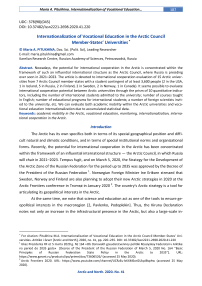Internationalization of vocational education in the Arctic council member-states’ universities
Автор: Pitukhina Maria A.
Журнал: Arctic and North @arctic-and-north
Рубрика: Northern and arctic societies
Статья в выпуске: 41, 2020 года.
Бесплатный доступ
Nowadays, the potential for international cooperation in the Arctic is concentrated within the framework of such an influential international structure as the Arctic Council, where Russia is presiding over soon in 2021-2023. The article is devoted to international cooperation evaluation of 15 Arctic universities from 7 Arctic Council member-states with a student contingent of at least 3,600 people (2 in the USA, 1 in Iceland, 5 in Russia, 2 in Finland, 2 in Sweden, 2 in Norway, 1 in Canada). It seems possible to evaluate international cooperation potential between Arctic universities through the prism of 10 quantitative indicators, including the number of international students admitted to the university; number of courses taught in English; number of educational programs for international students; a number of foreign scientists invited to the university, etc. We can evaluate both academic mobility within the Arctic universities and vocational education internationalization due to accumulated statistical data.
Academic mobility in the arctic, vocational education, monitoring, internationalization, international cooperation in the arctic
Короткий адрес: https://sciup.org/148318369
IDR: 148318369 | УДК: 378(98)(045) | DOI: 10.37482/issn2221-2698.2020.41.220
Текст научной статьи Internationalization of vocational education in the Arctic council member-states’ universities
The Arctic has its own specifics both in terms of its special geographical position and difficult natural and climatic conditions, and in terms of special institutional norms and organizational forms. Recently, the potential for international cooperation in the Arctic has been concentrated within the framework of an influential international structure — the Arctic Council, in which Russia will chair in 2021–2023. Tempus fugit, and on March 5, 2020, the Strategy for the Development of the Arctic Zone of the Russian Federation for the period up to 2035 was approved by the Decree of the President of the Russian Federation 1. Norwegian Foreign Minister Ine Eriksen stressed that Sweden, Norway and Finland are also planning to adopt their new Arctic strategies in 2020 at the Arctic Frontiers conference in Tromsø in January 2020 2. The country's Arctic strategy is a tool for articulating its geopolitical interests in the Arctic.
At the same time, we note that science and education act as one of the tools to ensure geopolitical interests in the macroregion [2, Pavlenko, Podoplekin]. Thus, the Kiruna Declaration notes not only an increase in the infrastructural presence in the Arctic, but also a large-scale in-
crease in the research factor3. Universities are becoming a tool that stimulates integration processes in the Arctic zone. The realities of globalization and growing international interdependence are driving changes in education in terms of what and how they teach in educational institutions around the world. Schools, colleges, institutes and universities are increasingly committed to developing international cooperation. All universities in the world, without exception, including the Arctic ones, take part in internationalization in such areas as:
-
• establishment of friendly relations with foreign universities, students, teachers and staff;
-
• development of the competencies of graduates with the knowledge, skills and abilities necessary for work and life in the modern world at the international and intercultural levels;
-
• improvement of the quality of education and research and introducing intercultural innovation in education and training 4.
The study is developing a tool for assessing the potential of international cooperation in the Arctic macro-region — the Barometer for assessing the potential of international cooperation in the Arctic , including an integral assessment of international cooperation in the macro-region as a whole and the geographical distribution of the intensity of cooperation in the regional context.
Description of indicators for the Barometer
The Barometer for assessing the potential for international cooperation in the Arctic is a convenient infographic tool that makes it possible to familiarize all to whom it may concern with the situation in the field of international cooperation.
The methodology of the Barometer for assessing the potential for international cooperation in the Arctic includes a list of 10 quantitative indicators used to analyze international cooperation of Arctic universities:
-
• the number of implemented projects within the BEAC, NCM, AC over the past 5 years;
-
• the share of foreign students in the total share of students;
-
• the presence of large universities and research centers that carry out Arctic research;
-
• the number of teachers and scientists invited to implement educational programs, conduct research;
-
• the proportion of students sent to study at foreign universities;
-
• the number of foreign students admitted to the university;
-
• the number of educational programs (bachelor's and master's) in English for foreign students;
-
• number of courses in English;
-
• number of international partnerships and university memberships;
-
• the total number of PhD programs with foreign universities.
Quantitative data on 10 indicators was collected from 3 types of open sources:
-
• a database on projects in the field of economy, innovation, environmental and social spheres, supported by BEAC, NCM and the Arctic Council;
-
• websites of large Arctic universities (5 Russian and 10 foreign universities with a student number of at least 3 600 people 5);
-
• website of the University of the Arctic - an international organization uniting 174 participants, including higher education institutions and other organizations, mainly from the Arctic countries.
Thus, the main focus of the international cooperation of the University of the Arctic, as can be seen from Fig. 1, falls on Northern Europe (Fig. 1). It should be emphasized that Finland plays the greatest role in the establishment and development of the University of the Arctic, which is also noted in the 2010 Barrows Declaration: “We are pleased to note the continuing development of the University of the Arctic, express our gratitude to Finland for the administrative support of the University and we will inspire the Arctic states and other partners to support the development of key programs of the University” 6.
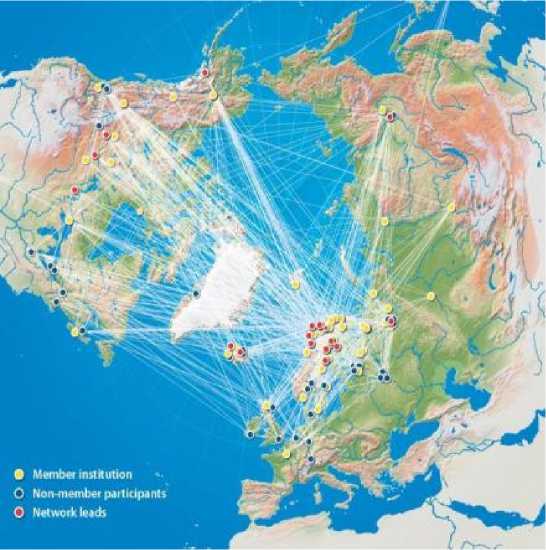
Fig. 1. Visualization of international cooperation at the Arctic University: 1) institutions participating in Arctic cooperation; 2) partners who are not participants in Arctic cooperation; 3) leaders of Arctic cooperation.
As follows from Fig. 1, Russia is significantly behind in terms of the number of contact points, which indicates the insufficient and even sluggish international activity of the Russian Federation in the field of science, education and human capital development.
However, in order to gain a deeper understanding of the international activity of Arctic universities, we will consider each of the 10 proposed indicators separately.
Indicator No. 1 “The number of projects implemented within the BEAC, NCM and the Arctic Council for 2012–2017”. Data on the number of projects implemented within the framework of such international organizations as BEAC, NCM and the Arctic Council for 5 years were obtained from the materials accumulated in the form of a database (Fig. 2).
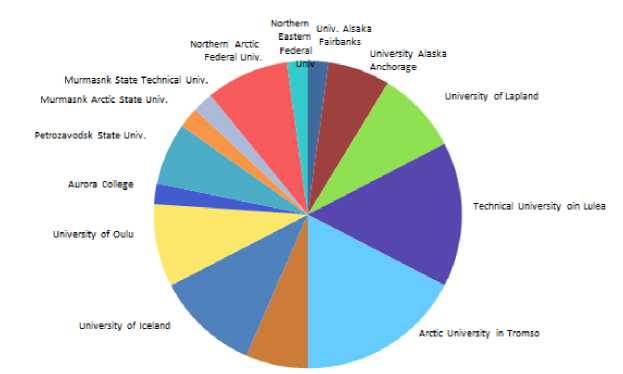
ko'd university (Bodo)
Fig. 2. Number of projects implemented under BEAC, NCM and the Arctic Council over the past 5 years, 2012–2016
As it follows from fig. 2, the largest number of projects within the framework of international organizations is implemented by the Arctic University in Tromsø, Norway (8 projects) and the Technical University in Luleå, Sweden (7 projects). This is followed by the University of Iceland, the University of Oulu, the University of Lapland and NArFU (Russia) with 4 projects, respectively.
Indicator No. 2 “The share of foreign students from the total share of students” is presented in fig. 3. As follows from fig. 3, the leader in the number of foreign students is the University of the Arctic in Tromsø (Norway) with 10%, the second place belongs to the University of Iceland — 8.34%, followed by the University of Lapland (Finland) — 6.4%. Russian Arctic universities, with the exception of PetrSU (4.05%) and NArFU (4%), are very much “sagging” in this indicator.
-
■ University of Alaska Fairbanks
-
■ University of Ancorage Alaska
-
■ University of Lapland
-
■ Lulea University of Technology
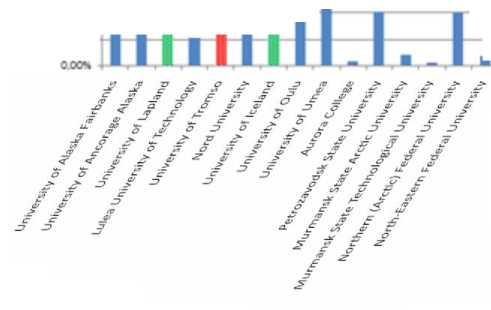
-
• University of Tromso
-
■ Nord University
-
• University of Iceland
-
• University of Oulu
-
■ University of Umea
-
• Aurora College
-
■ Petrozavodsk State University
-
■ Murmansk State Arctic University
-
■ Murmansk State Technological University
-
■ Northern (Arctic) Federal University
Fig. 3. Share of foreign students out of a total proportion of students, 2017
Indicator No. 3 “The presence of large universities and research centers, implementing Arctic research”. The research focuses on 15 Arctic universities located beyond 66 degrees north latitude, that is, beyond the Arctic Circle (66 °33′44 ″ (66.5622°) north of the equator).
Also, the focus of the study is only on large universities (not branches) with a student number at least 3.600 people (table 1). Thus, the largest Arctic university is Umeå University with a student number of 31.500 in 2017, followed by the University of Alaska in Anchorage (20.000 students), NEFU (19.970 students), NArFU (17.228 students) and the University of Oulu in Finland (16.000 students).
Canada is an exception in some way, with only 2 colleges beyond 66 degrees north latitude: Aurora College and Yukon College. We analyze data from Aurora College only, as it is a college-university because it offers a bachelor’s degree in Social Work.
Table 1
Number of students of Arctic universities 2017
Arctic University name
Number of students
31 500
Umeå University
University of Alaska in Anchorage
|
NEFU |
19970 |
|
NArFU |
17228 |
|
University of Oulu |
16000 |
|
University of Iceland |
13782 |
|
Luleå Technical University |
13000 |
|
Arctic University Tromsø |
12000 |
|
Northern University (Bodø) |
12000 |
|
PetrSU |
11230 |
|
MSTU |
11000 |
|
University of Alaska at Fairbanks |
9870 |
|
Lapland University |
4685 |
|
MAGU |
3626 |
|
Aurora College |
559 |
IT technologies play an important role in the internationalization of Arctic universities, including their websites. Most of the websites of Arctic universities are developed in English (table 2). Exceptions are Russian universities, as well as the Technical University in Luleå (Sweden) and the Arctic University of Tromsø (Norway).
Table 2
Main language of the Arctic universities' websites
|
Arctic University name |
The language of the Arctic universities' websites |
|
University of Alaska at Fairbanks |
English |
|
University of Alaska Anchorage |
English |
|
Lapland University |
English |
|
Luleå Technical University |
Swedish |
|
Arctic University Tromsø |
Norwegian |
|
Northern University (Bodø) |
English |
|
University of Iceland |
English |
|
University of Oulu |
English |
|
Umeå University |
English |
|
Aurora College |
English |
|
PetrSU |
Russian |
|
MAGU |
Russian |
|
MSTU |
Russian |
|
NArFU |
Russian |
|
NEFU |
Russian |
A deeper understanding of indicator No. 3 “The presence of large universities and research centers, implementing Arctic research” will also help to study the number of mentions of cooperation with Russian universities in the news over the past year (fig. 4). The news feeds of 10 foreign Arctic universities were analyzed for mentioning Russia in them.

Fig. 4. Mentions about cooperation with Russia in the university's news feed for the year, 2017
As follows from fig. 4, the leaders in the number of mentions of cooperation with Russia are the University of Alaska at Fairbanks (USA) and the University of Lapland — they have 7 mentions per year. The second place is shared by the University of Alaska at Anchorage (USA), the Arctic University in Tromsø (Norway) and Bodø Northern University (Norway) — they have 5 mentions per year. That means an obvious interest in Russian research from the United States and Norway. The number of references to Russia is reduced to zero in the remaining 5 foreign universities taking part in this study.
Indicator No. 4 “The number of teachers and scientists invited to implement educational programs, conduct research”. The undisputed leader in this indicator is the Northeastern Federal University, which invited 72 foreign scientists in 2017, PetrSU ranks second (37 scientists), and the University of Iceland — 35 scientists (Fig. 5).
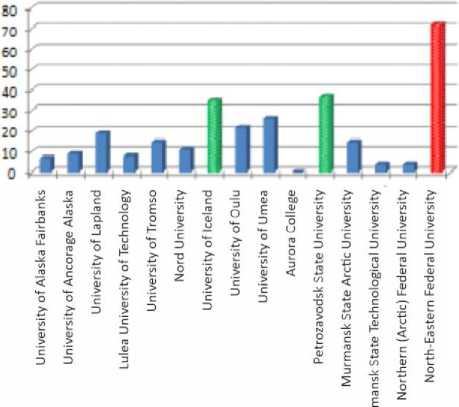
-
■ University of Alaska Fairbanks
-
■ University of Ancorage Alaska
-
■ University of Lapland
-
■ Lulea University of Technology
-
■ University of Tromso
-
■ Nord University
m University of Iceland
-
■ University of Qulu
-
■ University of Umea
-
■ Aurora College
” Petrozavodsk State University
-
• Murmansk State Arctic University
Fig. 5. The number of teachers and scientists invited to implement educational programs, conduct research, 2017
Indicator No. 5 “The proportion of students sent to study in foreign universities” is shown in fig. 6. Quantitative data were collected for 5 Russian Arctic universities, since they are mostly closed and are not in the public domain. This type of indicator refers to “specific” or hard-to-find indicators. For example, no such indicators could be found on the websites and reports of foreign Arctic universities.
The obvious leader in student exchange among Russian universities is NArFU, which sent 368 students abroad in 2017.
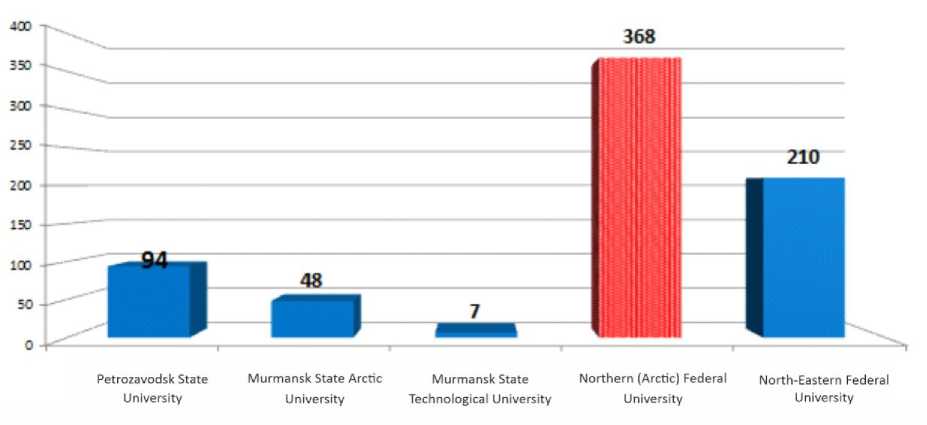
Fig. 6. The proportion of students sent to study in foreign universities, 2017
A broader understanding of the exchange of students within the Arctic universities of the studied countries is given in fig. 7. Infographics from the UArctic website indicate significant student flows in the following areas:
• from Norwegian universities to Russian ones;
• from Finnish universities to Canadian ones;
• on the mutual exchange of students between the USA and Canada;
• on the mutual exchange of students between Canada and Norway.
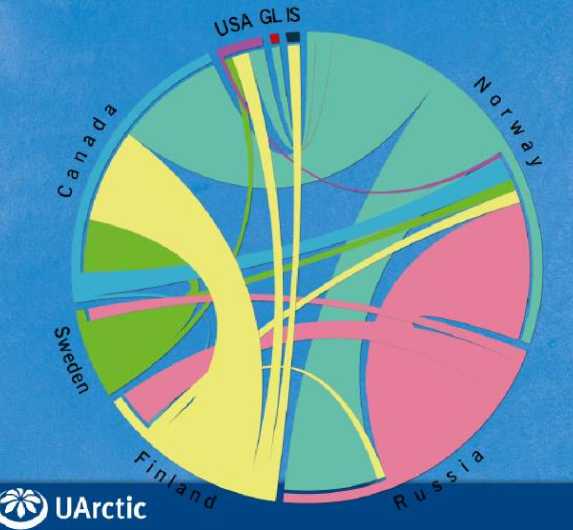
Fig. 7. Vectors of student exchange in Arctic universities in 2017
Quantitative indicator No. 6 “The number of foreign students admitted to the university” is formalized in table 3, which shows that the largest number of foreign students is accepted by the Arctic universities of Northern Europe: Umeå University, Tromsø Arctic University and the University of Iceland. NArFU (706 students) and PetrSU (455 students) dominate among Russian universities.
Table 3
Number of international students admitted to Arctic universities in 2017
|
Arctic University name |
Number of foreign students admitted to the university |
|
Umeå University |
1480 |
|
Arctic University Tromsø |
1200 |
|
University of Iceland |
1150 |
|
NArFU |
706 |
|
University of Oulu |
600 |
|
PetrSU |
455 |
|
University of Alaska in Anchorage |
524 |
|
University of Alaska at Fairbanks |
428 |
|
Northern University (Bodø) |
350 |
|
Lapland University |
300 |
|
Luleå Technical University |
270 |
|
NEFU |
146 |
|
MSTU |
35 |
|
MAGU |
32 |
|
Aurora College |
2 |
Indicator No. 7 “The number of educational programs (bachelor's and master's degrees) in English for foreign students” is shown in fig. 8. The obvious leader in terms of the number of study programs in English is the University of Iceland — 49 programs, the second place belongs to Umeå University, Sweden (39 programs) and the Arctic University of Tromsø, Norway (35 programs). NArFU is the leader among Russian universities — 7 training programs in English.
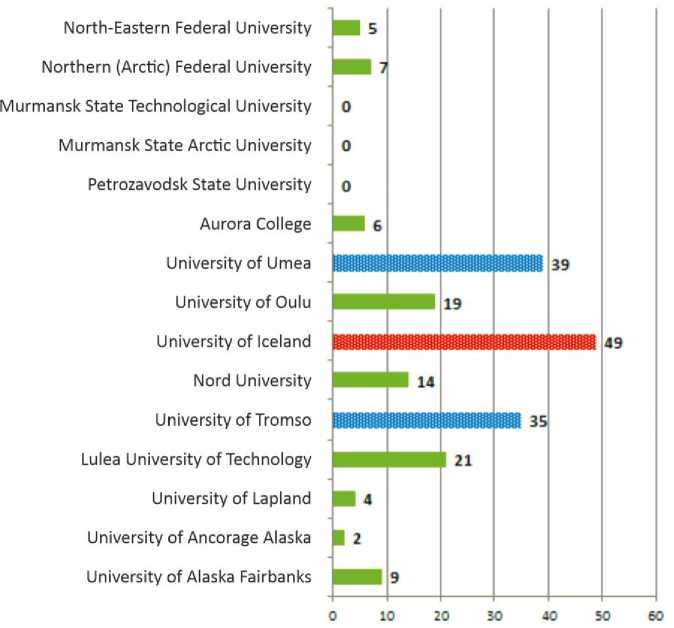
Fig. 8. Number of educational programs (bachelor's and master's) in English for international students, 2017
Indicator No. 8 “Number of courses in English” reflects the level of internationalization of a university. Thus, at the University of Iceland, 500 courses are taught in English, at the University of Oulu — 486 courses, and at the University of Tromsø — 350 courses. The Russian leader again is NArFU — 66 courses (fig. 9).
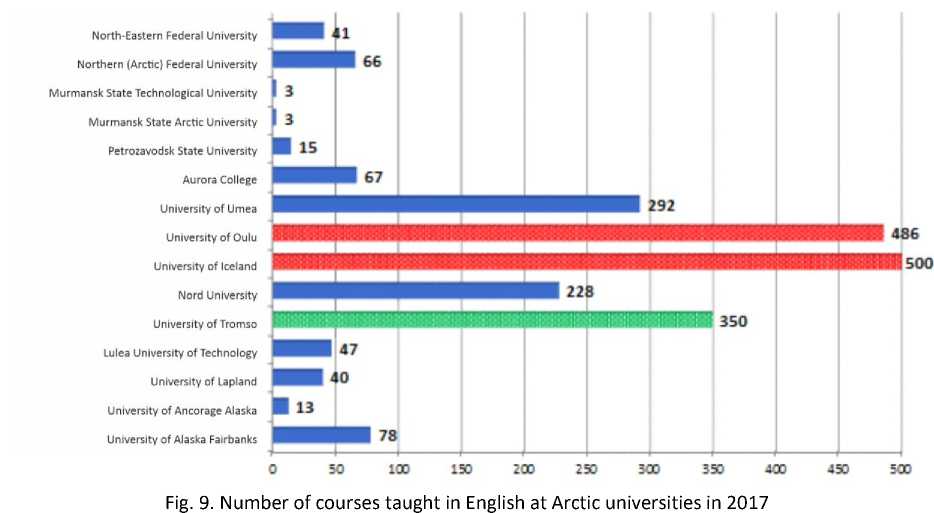
Indicator No. 9 “Number of international partnerships and university memberships” is clearly presented in fig. 10. The largest number of partnerships and memberships, as one of the signs of internationalization, have Umeå University (564 agreements), the University of Iceland (400 agreements) and NEFU (142 agreements).
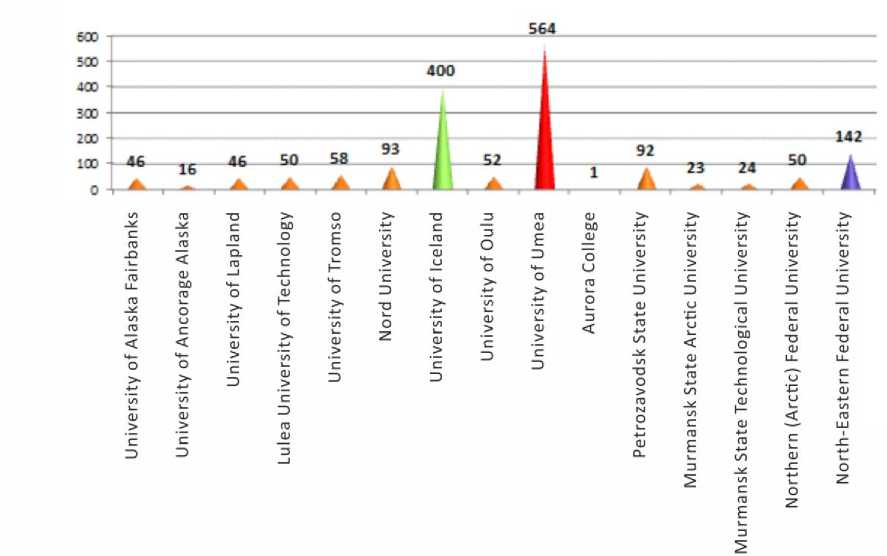
Fig. 10. Number of international partnerships and university memberships in 2017
Indicator No. 10 “The total number of PhD programs with foreign universities” reflects the highest degree of internationalization, as it gives an idea of the system of joint training of highly qualified scientific personnel within the framework of PhD programs.
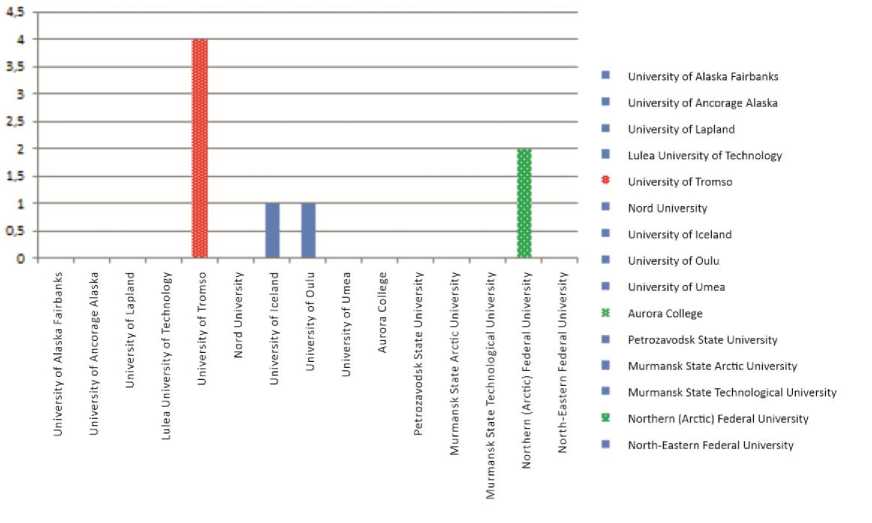
Fig. 11. The total number of PhD programs with foreign universities in 2017.
As follows from fig. 11, the leader is the University of Arctic Tromsø with 4 PhD programs, followed by NArFU with 2 PhD programs, the University of Iceland and the University of Oulu have 1 PhD program respectively.
Thus, within the framework of the study, a list of 10 indicators was formed, quantitative indicators for the selected indicators were accumulated and analyzed in the context of 15 large Arctic universities in 2017.
Barometer for assessing the potential of international cooperation in the Arctic
The clustering methodology of the Arctic macroregions is based on the research of A. Pi-lyasov, who identifies four models of the Arctic economy — Canadian, American, European and Russian [1, Zamyatina, Pilyasov].
The basis for clustering the Arctic regions in assessing the potential of international cooperation is a list of 10 indicators for internationalization, including the number of projects implemented within the BEAC, NCM, AC; the presence of large universities and research centers that carry out Arctic research; the share of foreign students in the total share of students; the number of teachers and scientists invited to implement educational programs, conduct research; the proportion of students sent to study at foreign universities; the proportion of foreign students studying at the university; the number of educational programs in English for foreign students; number of courses in English; number of international partnerships and memberships; the total number of PhD programs with foreign universities.
The quantitative indicators of 10 indicators were ranged using points from 1 to 3, where 1 point would correspond to a low potential for international cooperation, 2 points — an average potential, 3 points — a high potential. Thanks to the point ranking, it was possible to identify low / medium / high potential for international cooperation between various universities in the Arctic (table 4). In addition, the results of the last ranking of world universities in the top 100 were taken into account in the implementation of the point ranking, which included only Moscow State University among Russian universities.
As a result of 10 different indicators scoring, a table 4 was formed which demonstrates low / medium / high potential for international cooperation of various universities in the Arctic. If the sum of the university's points is less than 15, this indicates its low potential for cooperation in the international sphere, 15–20 points — the medium potential, over 20 points — the high potential.
Table 4
Assessment of the potential for international cooperation in the Arctic
|
Arctic University name |
Potential for international cooperation |
|
University of Alaska at Fairbanks |
low |
|
University of Alaska in Anchorage |
low |
|
Lapland University |
medium |
|
Luleå Technical University |
medium |
|
Arctic University Tromsø |
high |
|
Northern University (Bodø) |
medium |
|
University of Iceland |
high |
|
University of Oulu |
medium |
|
Umeå University |
high |
|
Aurora College |
low |
|
PetrSU |
medium |
|
MAGU |
low |
|
MSTU |
low |
|
NArFU |
medium |
|
NEFU |
medium |
Obviously, the Arctic of America (USA and Canada) shows low potential for international cooperation, the Arctic of Europe is high / medium, and the Arctic of Russia is medium / low. In general, the potential for international cooperation in the Arctic is at an average level.
For a more complete visualization of the potential of international cooperation, a map of the Arctic is proposed, which makes it possible to understand which regions of the Arctic are interested in international cooperation and which are not (fig. 12).
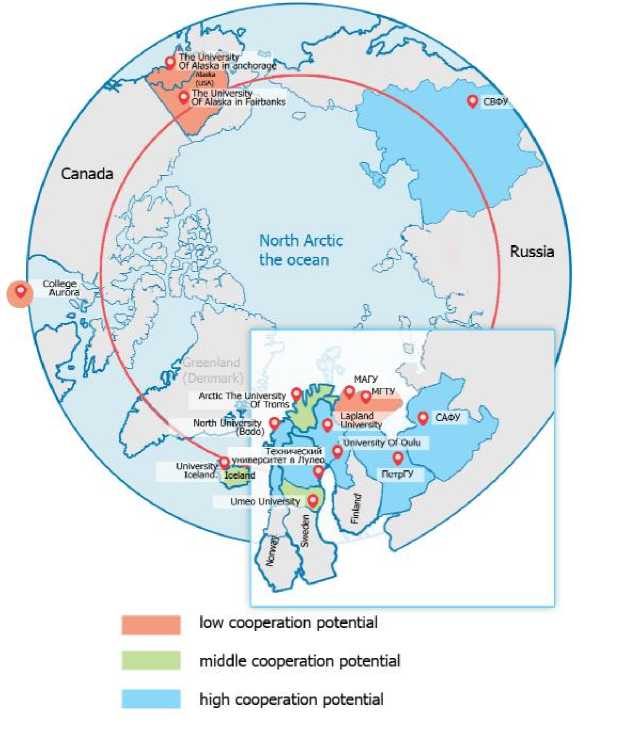
Fig. 12. Barometer for assessing the potential of international cooperation in the Arctic
Conclusion
The study of fifteen Arctic universities among the member countries of the Arctic Council in 2017 showed different levels of internationalization of higher professional education. The American Arctic (USA and Canada) showed low potential for international cooperation, the European Arctic — high / medium level, and the Russian Arctic — medium / low. It is advisable to make the following global conclusion for Russia: it is necessary to implement an optimal transition from low to medium potential for the universities of the Murmansk oblast (MASU and MSTU); from an average potential to a high one for 3 universities of the European North of Russia (PetrSU, NArFU) and the eastern part of the Russian Arctic (NEFU). Recommendations for Russian universities to move to the next level of internationalization may include the following provisions: conclude more agreements with foreign universities; diversify the vectors of student exchange and increase the volume of student exchange; develop training programs in English (bachelor's, master's); create a joint training program (PhD program); invite more foreign scientists, researchers; lead projects within the framework of international Arctic organizations (NCM, BEAC, Arctic Council); introduce courses in English into training.
Acknowledgments and funding
The article was prepared within the framework of the RFBR project “Live? Work? or Leave? Youth well-being and viability of the (post) mining Arctic industrial cities of Russia and Finland”.
Список литературы Internationalization of vocational education in the Arctic council member-states’ universities
- Zamyatina N.Yu., Pilyasov A.N. Rossiyskaya Arktika: K novomu ponimaniyu protsessov osvoeniya [Russian Arctic: Towards a New Understanding of Development Processes]. Moscow, LENAND Publ., 2018, 400 p.
- Pavlenko V.I., Podoplekin A.O., Kutsenko S.Yu. Sistema fundamental'nykh nauchnykh issledovaniy v Arktike i realizatsiya geopoliticheskikh interesov tsirkumpolyarnykh stran [The System of Basic Re-search in the Arctic and the Geopolitical Interests of Circumpolar Countries]. Arktika: ekologiya i ekonomika [Arctic: Ecology and Economy], 2014, no. 4 (16), pp. 86–92.

